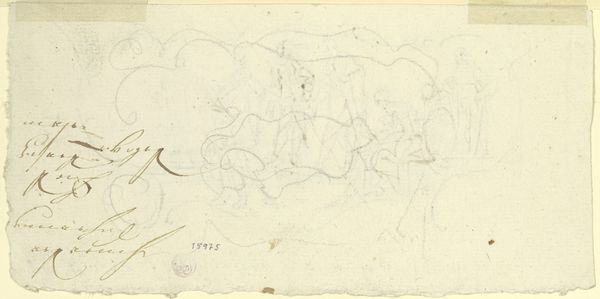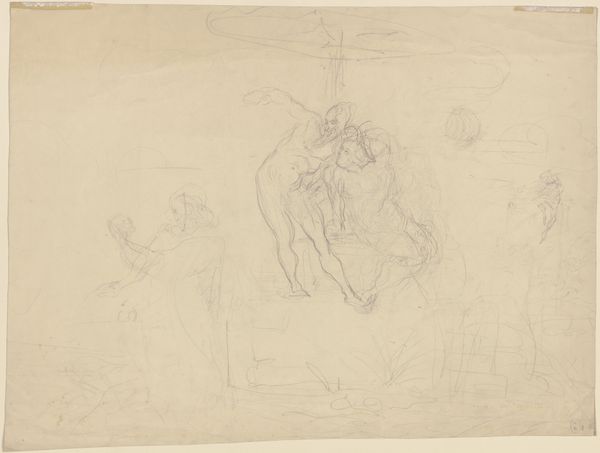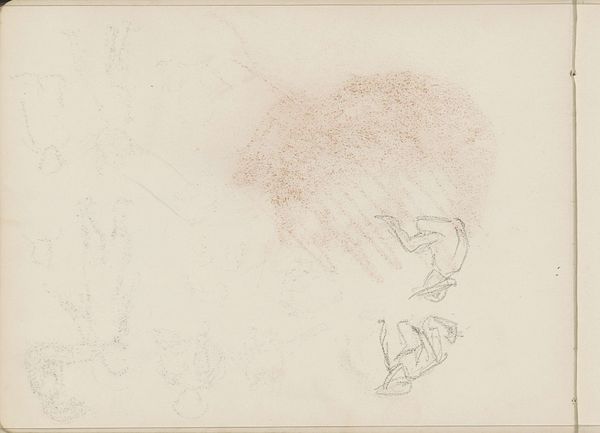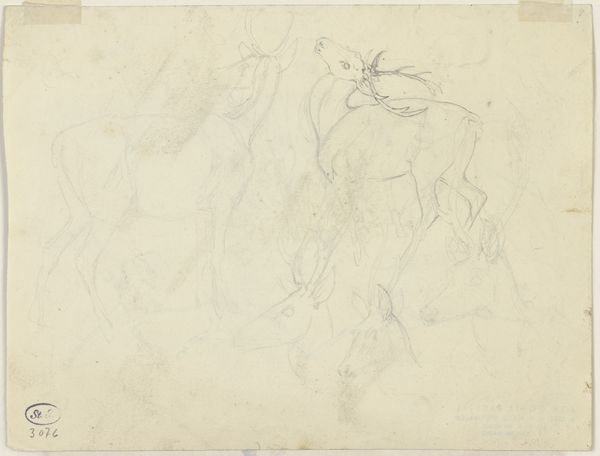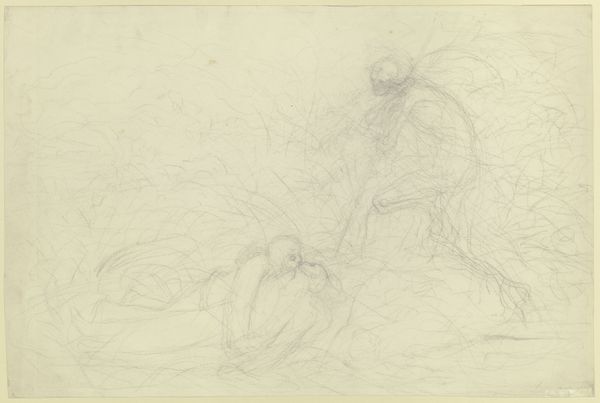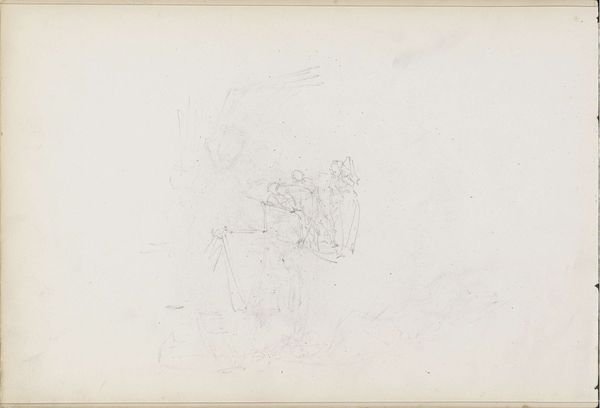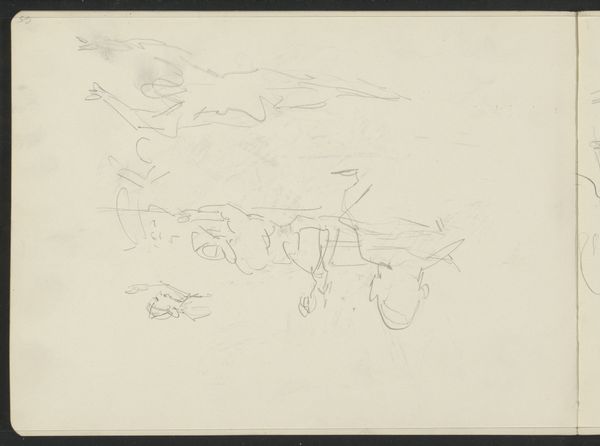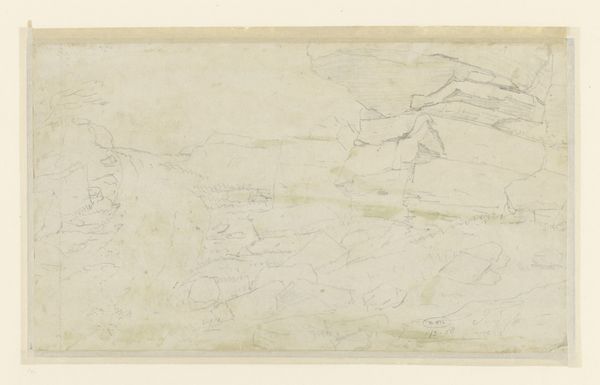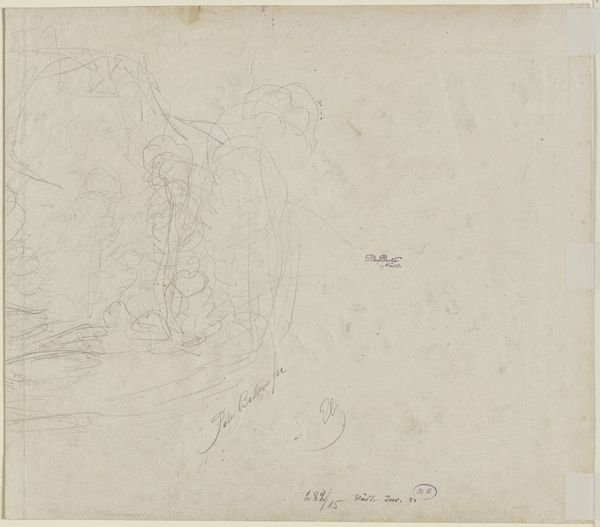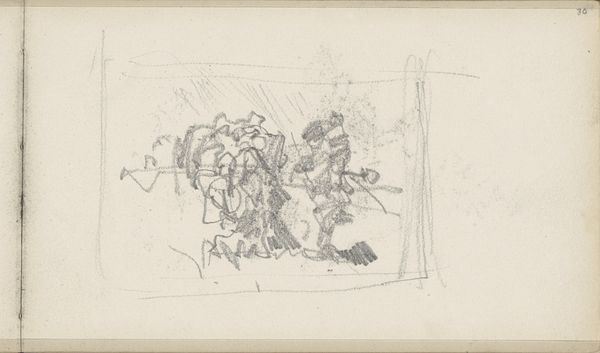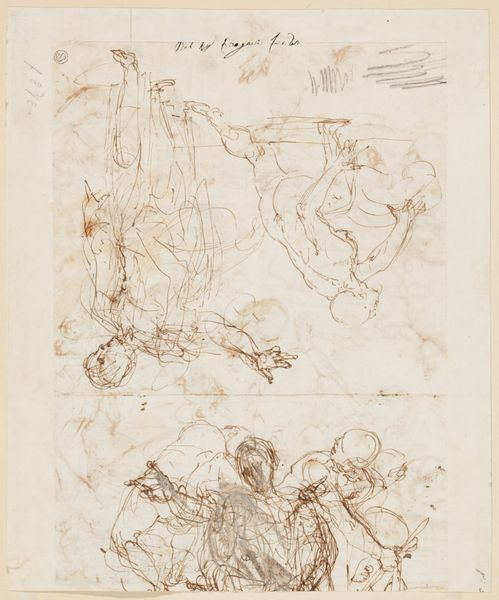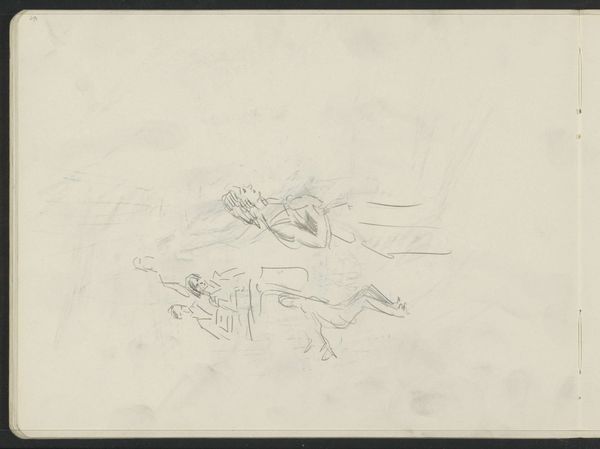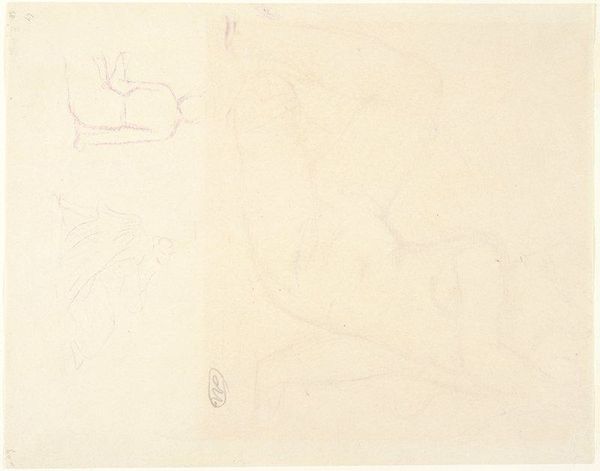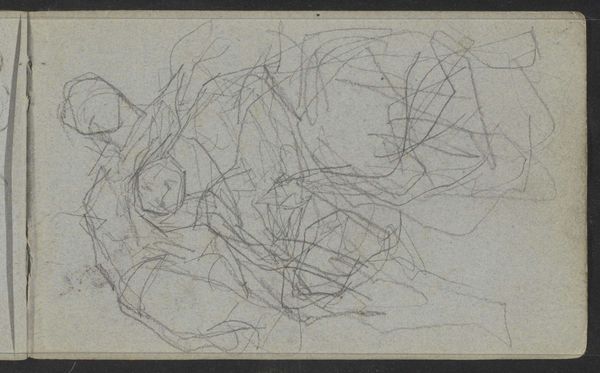
Zwei galoppierende Pferde mit einem Reiter, drei Profilköpfe, ein Kopf en face (Karrikatur) c. 1860 - 1868
0:00
0:00
drawing, paper, pencil, graphite
#
portrait
#
drawing
#
landscape
#
figuration
#
paper
#
sketch
#
pencil
#
graphite
Copyright: Public Domain
Curator: Here we have Rudolf Friedrich August Henneberg's "Two Galloping Horses with a Rider, Three Profile Heads, a Head en Face (Caricature)," likely created between 1860 and 1868. Editor: It's very faint, almost ephemeral. A series of ghostly graphite sketches. Is that some sort of collage in the middle, too? The dark splotch? Curator: Yes, it’s a graphite and pencil sketch on paper, and you are right—that dark mass is interesting. This piece is held in the Städel Museum's collection. Henneberg was working in a time of rapid social change and increasing political tensions, influencing the market for certain art forms. Editor: Absolutely. The rushed, almost frantic quality of the lines tells me this was less about formal portraiture, and more about the raw, immediate process of observation and creation. A working class material economy, where paper would be carefully economized. Curator: Sketches like this offer a glimpse into the artist's process, which is inherently interesting in relation to academic art institutions that controlled taste. He explores figures and forms, yes, but consider also the contemporary cultural context. Caricature emerged as a subversive form of social commentary. Editor: True, but it also underscores the physical act of making, doesn't it? The pressure of the pencil on the paper, the economy of line... there's a tactile element even through the glass that speaks to the materiality. Even the collage seems utilitarian in its gesture. A rag? Tape? Curator: Consider that its utility extended beyond mere draftsmanship. Such pieces, especially those with satirical elements, often circulated in specific social circles. These served as commentary among political actors. Its meaning was generated through viewership. Editor: The immediacy of its materials contrasts strongly with how we're looking at it today, framed, preserved. The intimacy of that original act of creation, transformed by its current institutional context. Curator: I agree. I find myself looking at this work anew, thanks to your material insight. Editor: And I, in turn, understand better the sketch's complex place within a very charged, public moment.
Comments
No comments
Be the first to comment and join the conversation on the ultimate creative platform.
